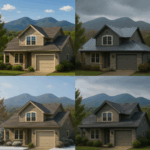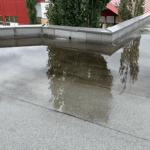Solar shingles are a new way of getting electricity out of your roof. Thin-film photovoltaic cells are being designed to double as roof shingles, thus turning sunlight into electricity that can power your home or be sold back to your utility company.
Few power-generating technologies have as little impact on the environment as photovoltaics. When operating, photovoltaic systems produce no pollution or noise, and they require no fuel (other than the sun) to run them. What’s more, they’re infinitely renewable, as long as the sun shines. Also, solar shingles can save homeowners up to 60 percent on their monthly energy costs. (Another way of tapping into nature for “free” energy is through small wind-power systems.)
The energy generated by solar shingles can provide power both to the home and to the utility’s power grid. While PV systems are capable of powering houses and small businesses without any connection to the electricity grid, many people prefer the advantages that grid-connection offers. This is because any excess electricity you produce is fed back into the grid. When you need it, electricity from the grid supplies your needs, thus eliminating the expense of electricity storage devices like batteries.
Solar shingles offer many advantages:
- They provide the same protection, durability and flexibility as asphalt shingles.
- They’re visually appealing, designed to blend with standard roofs and normal home construction.
- They replace roofing material—additional materials underneath aren’t necessary.
- Installation costs are low.
- They’re lightweight.
When considering whether solar shingles are right for your house, think about whether you have a sunny spot free of shading on the roof. Ideally, they should be mounted in a south-facing location. If a southern location isn’t available, west- or east-facing locations can provide better than 90 percent of the power of a true south-facing system. In general, small homes will need a 10 X 12 area for solar shingles, while a larger home can require up to 1,000 square feet.
Courtesy of HGTV





